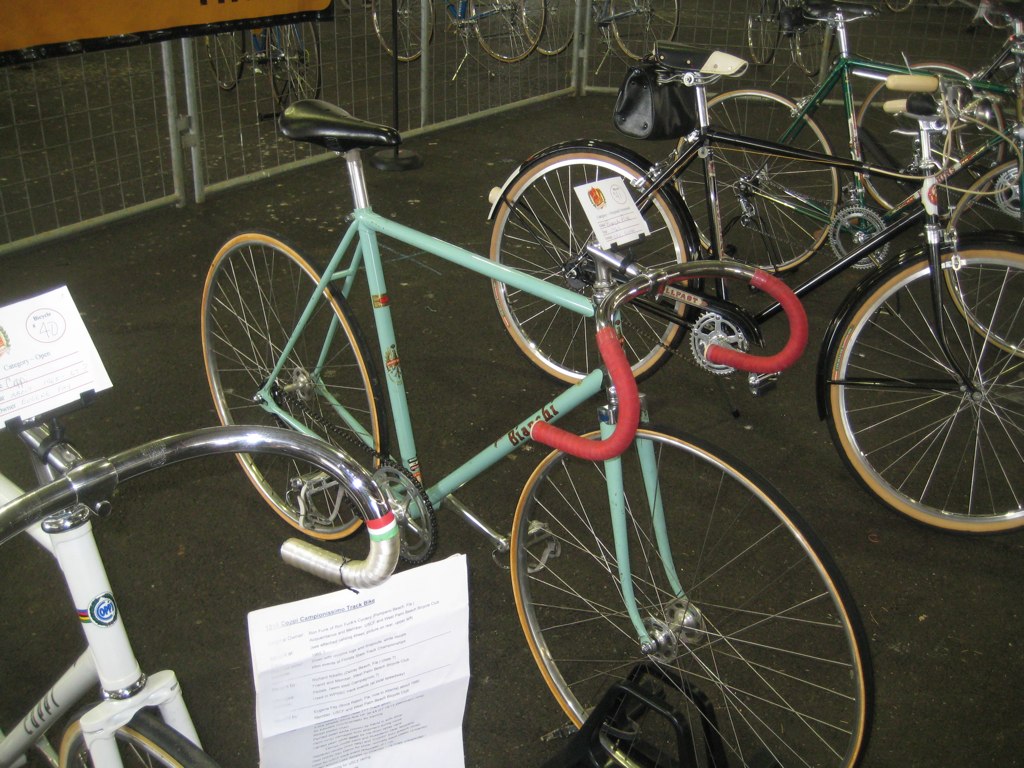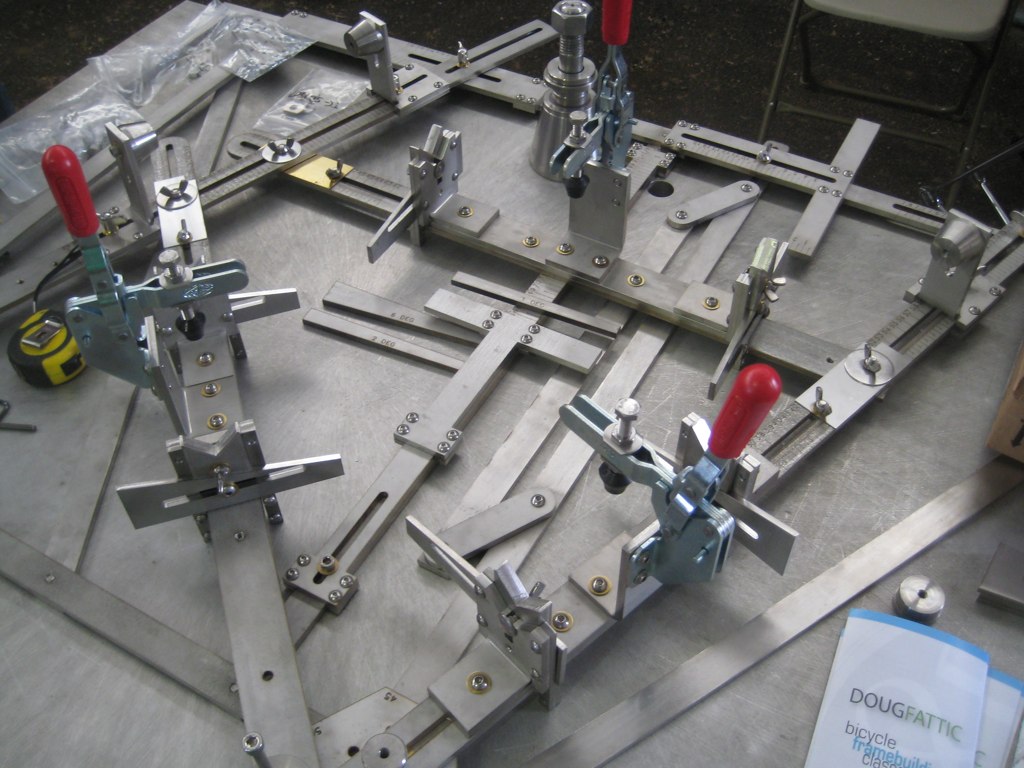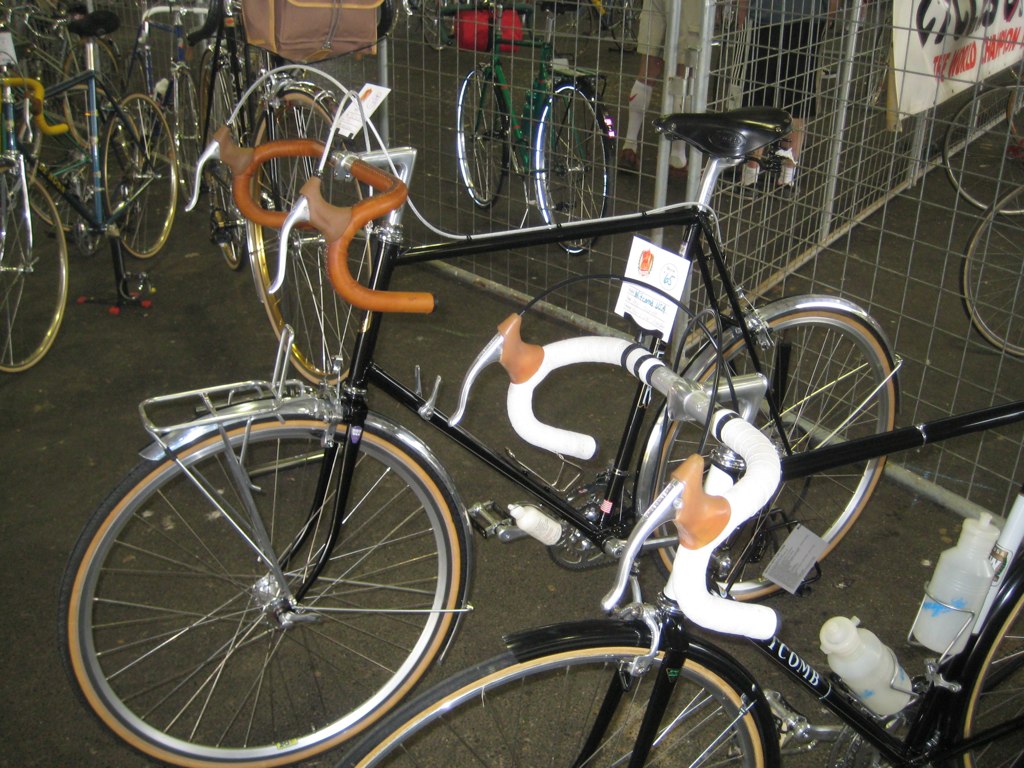 Regular readers of this blog will know what Le Cirque du Cyclisme is... a gathering of classic bike enthusiasts and their wonderful bikes. This year marked the 13th year of the event, and the third here in Northern Virginia. A few years back, when it was in Greensboro, NC, I managed to get down for the weekend, and attended the Saturday seminars, as well as the Sunday bike show/swap meet. Since it moved to Virginia, I've only been able to get time off work for a few hours on Sunday, so I make a fairly quick lap of the show floor and peruse some of the fun offerings at various folks' tables full of bikes, frames, and parts. Fun time all around, made more fun this year by bringing a friend along who had never been.
Regular readers of this blog will know what Le Cirque du Cyclisme is... a gathering of classic bike enthusiasts and their wonderful bikes. This year marked the 13th year of the event, and the third here in Northern Virginia. A few years back, when it was in Greensboro, NC, I managed to get down for the weekend, and attended the Saturday seminars, as well as the Sunday bike show/swap meet. Since it moved to Virginia, I've only been able to get time off work for a few hours on Sunday, so I make a fairly quick lap of the show floor and peruse some of the fun offerings at various folks' tables full of bikes, frames, and parts. Fun time all around, made more fun this year by bringing a friend along who had never been.All in all a good show, but I got the feeling there were fewer bikes this year. There just seemed to be more space between the bikes, and it just felt more sparse all around. And this year there seemed to be a distinct lack of "city" bikes and other bikes outside the realm of road bikes. Granted, the event generally does focus on "classic lightweights", so the fine steel road bike is the norm, but in years past there seemed to be more mixte framed bikes, and bikes with upright handlebars and more casual or utilitarian use in their design. As a fan of such bikes, particularly the high quality ones, it was a little disappointing.
That's not to say there weren't some lovely bikes to ogle... there certainly were. In particular, I was taken with the two late 70s Treks here:
I've owned a 1980 Trek for 30 years now, and it's a lovely bike (you may have read about it here before). I now currently own three late 70s/early 80s Treks, and I'm a big fan of that brand in that era. The two shown are really great examples... not truly "original equipment" bikes, but set up with mostly components of that era, as one might have customized them at the time. Which makes perfect sense that Trek sold both framesets and complete bikes. My own 1980 started as a complete, standard model 414, but I immediate swapped out the wheels, and over the years, altered any number of things, to the point where she now has a mix of eclectic parts ranging from 80s to 90s era. It makes for a fun and functional bike, if not a showpiece.
One other high point of the show was meeting framebuilder Doug Fattic and seeing the fixture that he uses for framebuilding. Unlike many such items, Doug's is set up so you can use the fixture itself to lay out the design of a frame, rather than starting with a paper drawing. It looks like quite the setup, and I'd love a chance to try one out sometime.

I keep thinking I need to carve out some time off for the event and really immerse myself in the whole weekend of seminars, banquets, auctions, and bike show. And I keep telling myself "this year I'll show some of my bikes"... but with a full time job as the head mechanic at a small, busy bike shop, it's hard to really make a good case for taking that much time off at this point in the season, when we are really, really busy. But maybe someday....
More photos are at:
Cirque du Cyclisme, Jun 6, 2010


2 comments:
Great classical bikes are always a joy to see. Glad I've found your blog, the post on the Brommies is cool too!
Best
Seb.
Managers can always hire extra help, even temporary, to free up space in their schedules.
Just a thought.
But don't give up on the framebuilding thing just yet!
Post a Comment